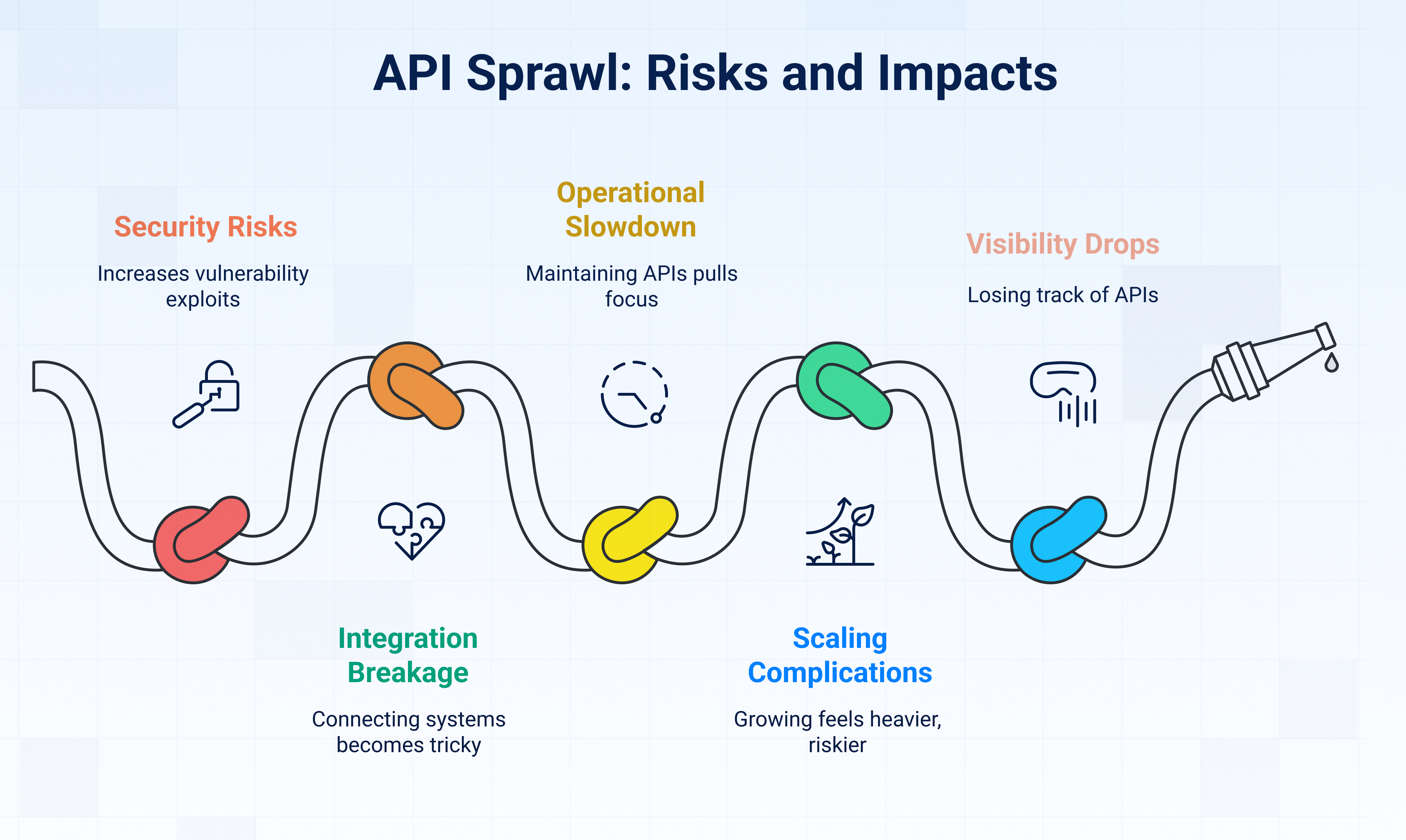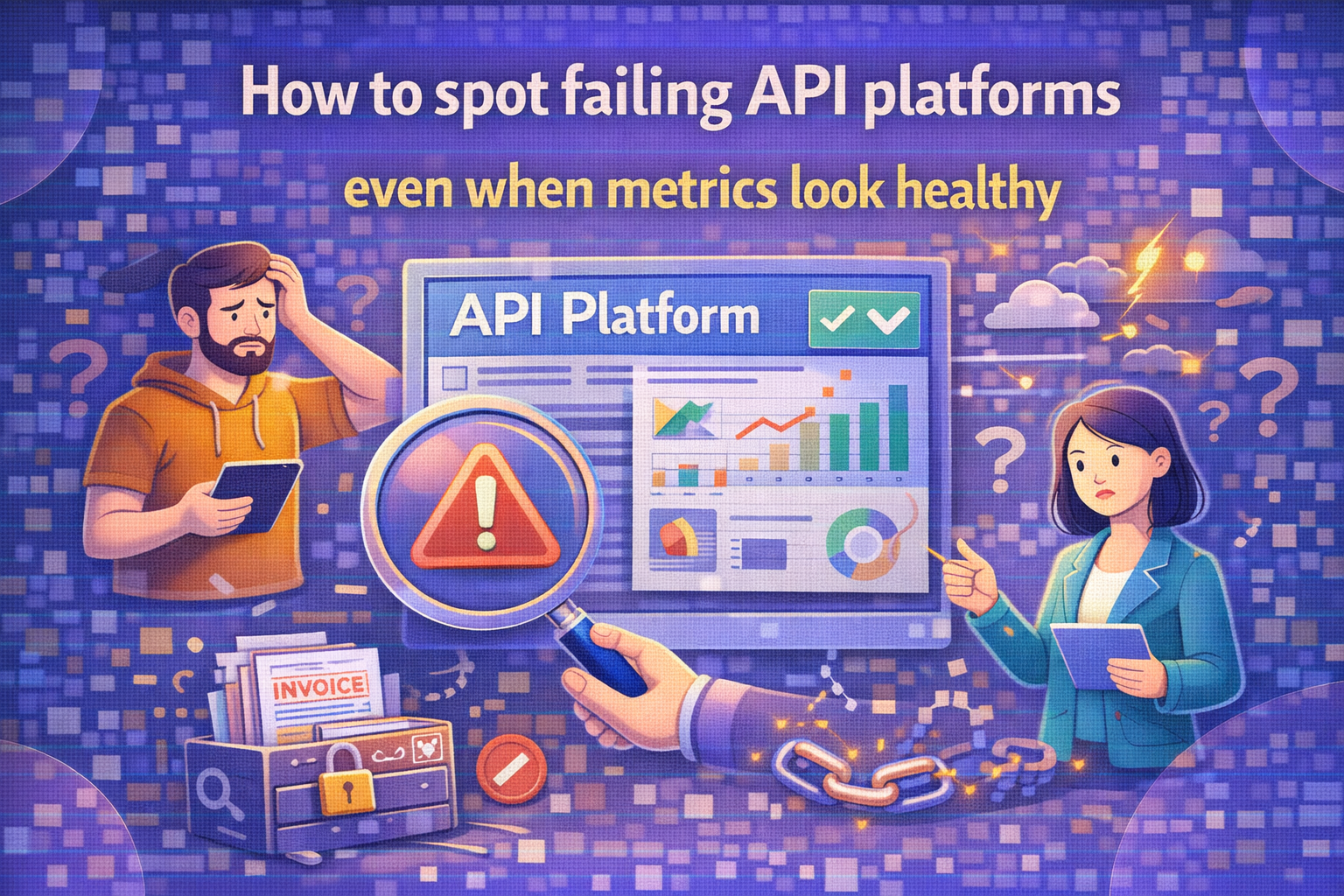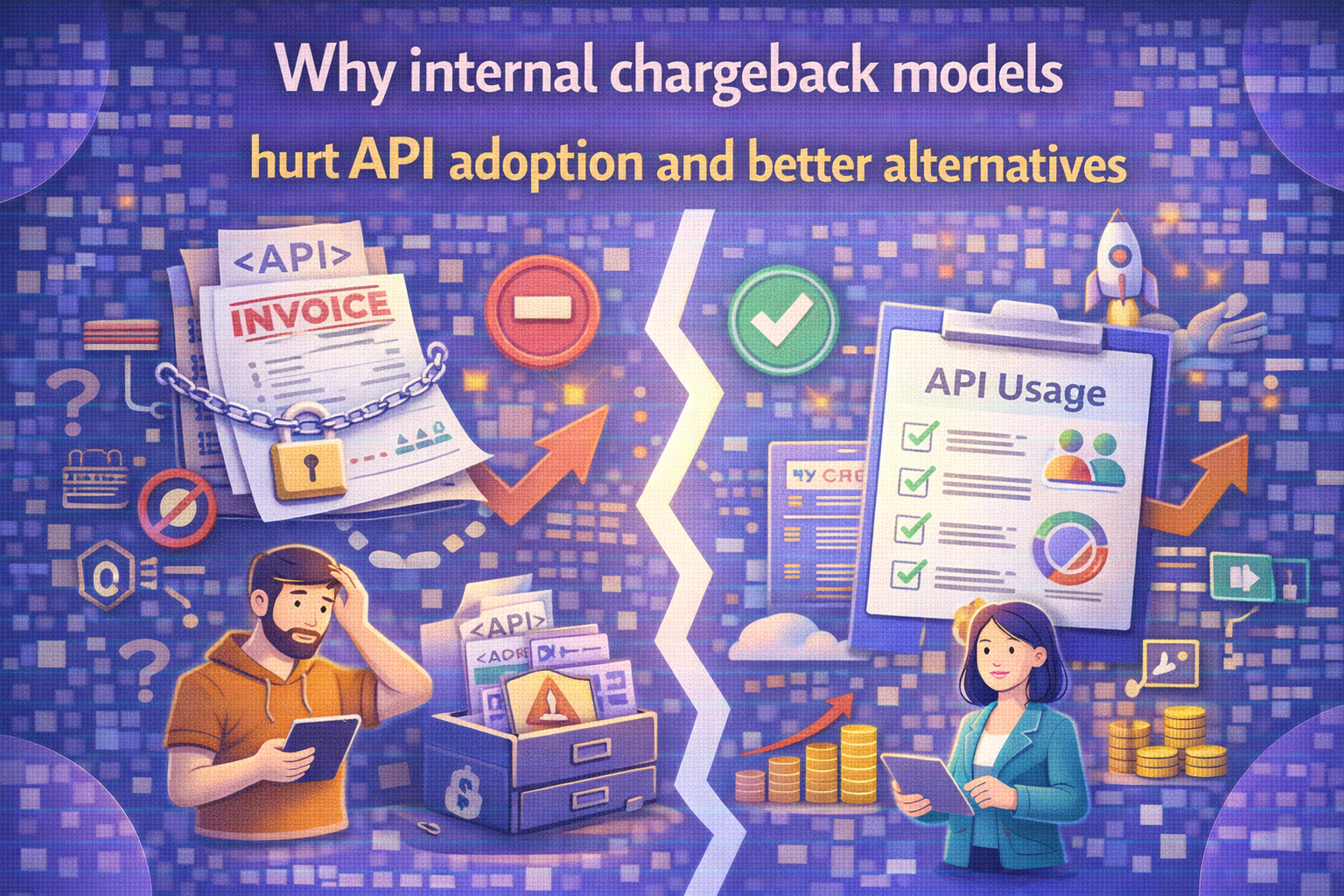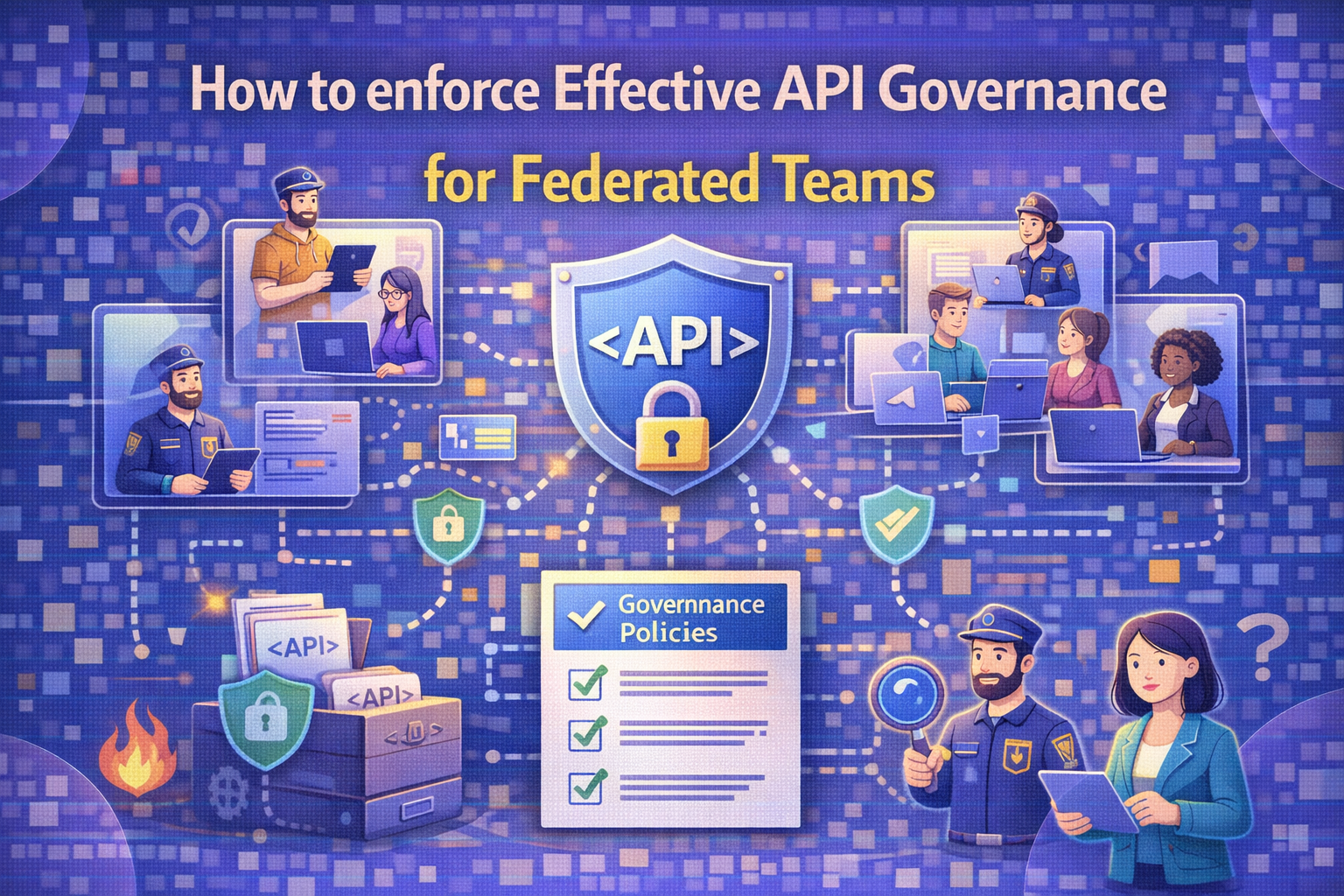
According to a survey report by Traceable, over 55% of organizations use about 500 APIs, and API sprawl continues to be one of the top security risks that they face. In fact, 57% of organizations have already faced an API-related breach and they only expect the risks to increase over the next one or two years.
With rapid SaaS adoption and new applications being added constantly without a centralized plan in place, it becomes harder to track everything. Over time, hundreds of unmanaged APIs start piling up across different teams, creating blind spots
Read on to discover the top reasons for API sprawl, the key challenges and concerns and ways to control it.
What is an API sprawl?
API sprawl is defined as the uncontrolled and unmanaged expansion of application programming interfaces (APIs) in a company leading to security risks and inefficiencies. It occurs when APIs keep getting added without a clear picture to organize, secure, or monitor them.
Every time you get a new project and build a new app or tool, they come with more APIs. At first, you might think it is manageable. But over time, without control, APIs start to pile up across teams, platforms, and technologies.
The actual problem isn’t just the number of APIs, it’s about losing track of them. When APIs are getting on board with no visibility, it becomes hard to find, protect, and connect them to the systems.
Why is API sprawl a problem?
API sprawl poses security risks, reduction in productivity, and increased operational costs to an organisation. On top of that, it becomes tough to manage, secure, and understand the whole API ecosystem.
Here are some of the major issues API sprawl can cause:
1. Lack of visibility
It becomes almost impossible to manage the APIs if you’re not aware of the number of APIs you have and where they are. Such blind spots make it harder to monitor the usage, spot outdated or old APIs, or detect any security vulnerabilities. And if you’re working on a hybrid architecture then it's extremely tough to get a unified view of API configurations and traffic.
2. Security risks
Unsecured APIs are free targets for attacks. Old or unused APIs when left exposed become entry points for attackers even when the rest of your system is strong and secure. And it leads to potential data breaches and sensitive data leaks.
3. Governance challenges
When APIs grow uncontrollably, there are no standardised security measures, consistent documentation or even common data models and formats which creates governance challenges.
4. Increased operational complexity
When APIs work across different systems, differences in protocols, data formats, and integration methods create major challenges. It becomes very difficult to connect systems, and teams end up spending more time fixing broken connections and handling system mismatches.
5. Costly maintenance
The more unsecured or unmanaged APIs you have, the more expensive it becomes to maintain them. Sometimes you could have duplicate or redundant APIs, which can drain resources.
6. Difficult API discovery
If APIs aren’t managed properly, even your own team struggles to find them. Instead of reusing the APIs you already have, teams end up building new ones from scratch. It wastes and makes the sprawl even worse.
What causes API sprawl?
API sprawl happens when companies build multiple APIs without proper management practices. It often occurs due to a lack of a unified API design, poor communication within a team, and an increase in micro services.
Here are some of the major causes why API sprawl occurs:
1. Fast-Paced Development
Creating new APIs becomes an easy choice when you are launching new features or products. Teams often work in silos and move fast and often skip to check if existing APIs can be reused. And, this is how unmanaged APIs are left behind, unnoticed and unsecured.
2. No Clear API Ownership
Mostly what happens is, in an organization different teams build their own APIs, and there is no centralized team handling APIs. So, every team follows its own standards and security practices without thinking about the bigger picture. As a result, it gets very difficult to manage simple connections.
3. Missing Documentation
Teams always choose the simpler pathway, and if they cannot easily find API documentation, they end up creating a new API. There is no centralised document repository where teams can collaborate and find what already exists. This leads to duplicate APIs doing the same work. Therefore, the system becomes heavier and creates confusion.
4. Hard-to-Find APIs
Without proper API discovery tools, finding existing APIs becomes frustrating for teams. As a result, they often assume no solution is available and build a new API from scratch. Over time, this quiet duplication adds to the growing problem of API sprawl.
5. Shift to Micro services
Micro services is an architectural approach where an application is built by breaking it into smaller, independent parts. They improve flexibility, but each one adds more APIs to the network. If older services are not cleaned up, your team quickly ends up having hundreds of APIs to manage.
The risks and impact of API sprawl

API sprawl can create bigger problems than you might expect. As APIs pile up without a plan, managing them becomes harder. Security, performance, and even simple operations can start to suffer over time.
Let’s walk through some of the main risks and impacts you should be aware of:
Security becomes harder to manage
API sprawl increases the risk of broken authentication, exposed sensitive data, and unpatched vulnerabilities. With too many unmanaged APIs, it becomes easier for attackers to exploit weak security controls, outdated endpoints, and inconsistent access policies. Such gaps create serious threats that can lead to data breaches or system compromise.
Integrations start breaking
When APIs are created without coordination, connecting systems becomes tricky. Some APIs might overlap or conflict with newer ones. Teams end up spending more time fixing integrations instead of building better features.
Operations slow down
The more APIs you have, the more time your teams spend maintaining them. Managing outdated or duplicated APIs pulls focus away from innovation. Over time, operations feel slower and less efficient across departments.
Scaling gets complicated
Growing a business means adding new tools and services. But if your API ecosystem is cluttered, scaling feels heavier and riskier. Teams must navigate through existing issues before they can build something new.
Visibility drops across systems
Without an overall view of your APIs, it’s easy to lose track of which ones are active, deprecated, or no longer needed. Poor visibility increases the chance of errors and security gaps which makes management reactive instead of strategic.
Costs rise without notice
Each unmanaged API costs money whether it’s for hosting, monitoring, or updating. When API sprawl goes unchecked, the costs pile up quietly and take away the budget from projects that actually drive growth.
How API sprawl works in the practical world
API sprawl builds up quietly during everyday development. Each new project, update, or integration can add more APIs to your system.
Here’s the breakdown of how API sprawl works in the practical world:
Independent API development
When teams build APIs separately, problems start to multiply. You'll see three teams creating similar APIs because they don't talk to each other. One team might use strong security while another leaves gaps in their API protection. And it’s more common than you think because developers have a tendency to focus on immediate projects for quick results.
Lack of unified design and planning
Think about trying to read instructions written in five different languages, that's what happens without API standards. Your REST APIs don't work like your GraphQL ones, and developers waste hours figuring out how each one operates. We've seen this frustration firsthand when new team members try to make sense of inconsistent API documentation.
Rapid application development cycles
Modern development moves fast, and APIs multiply just as quickly. Your team might release updates daily, adding new API versions while keeping old ones around. Soon enough, you're juggling versions 1, 2, and 3 of dozens of different APIs. It becomes impossible to remember what connects to what anymore.
Microservices architecture
Breaking down that monolith seemed smart until each tiny service needed its own API. Now instead of one interface, you're managing twenty interconnected ones. When something breaks, the problem could be anywhere in this complex web.
Consequences
Security teams struggle to protect all the endpoints. Systems slow down with so many connection points, and developers spend more time fixing old APIs instead of building new features.
Shadow APIs
Watch out for those hidden APIs that teams build under the radar. They don't go through security reviews or follow company standards. When the developer who created them leaves, nobody even knows they exist until something breaks downstream.
Best practices to detect and manage API sprawl
API sprawl happens to almost every growing organisation. You start with a few APIs, then teams create more for different projects, and before you know it, you've got APIs everywhere with little oversight.
Let's talk about the best practices you can use to detect and manage API Sprawl:
Implement an API governance strategy
Creating some ground rules is your first step toward managing API sprawl. You need to define who can create APIs, what approval steps they need to follow, and what standards must be met.
It doesn't mean building bureaucracy that slows everything down. It's about giving clarity so teams understand the right way to develop and deploy APIs. With these guidelines in place, you'll see fewer unofficial APIs coming across.
Create a centralised API catalog
One of the biggest challenges with API sprawl is simply knowing what exists in your environment. That's why a central catalog becomes so valuable, it serves as your single source of truth for all APIs in your ecosystem.
This catalog should include details like each API's purpose, documentation, ownership, and access controls. When developers can easily search this resource, they're much less likely to build something that already exists. Plus, it helps everyone understand how different services connect to each other.
Utilize API discovery tools
Even with solid governance, some APIs will slip through the cracks. That's where discovery tools come into play. These solutions automatically scan your systems to identify APIs that might not be properly documented.
Think of them as specialised detectors that can find hidden APIs buried in your environment. Many of these tools monitor API traffic, detect new endpoints, and provide insights into usage patterns. This visibility is essential for effectively managing sprawl.
Implement API lifecycle management
Every API has a natural lifecycle from creation to eventual retirement. If you do not manage APIs properly, old ones stay around and create more problems and security risks. You keep your ecosystem cleaner and more efficient by making clear processes for versioning, updating, and retiring APIs.
For example, when releasing a new version, set a timeline for phasing out the previous one. This prevents the accumulation of legacy endpoints that nobody maintains anymore.
Prioritise API Security
With API sprawl comes increased security vulnerabilities. Each API represents a potential entry point for attackers, so consistent security measures are non-negotiable.
Start with strong authentication methods like OAuth or API keys. Make sure your authorization controls limit users to only what they need access to. Encrypt your API traffic to protect sensitive data. And don't forget regular security assessments to identify weaknesses before they become serious problems.
Monitor usage and performance
Tracking how your APIs are used gives you helpful insights. It shows where you can combine similar APIs or remove ones that are no longer needed.
For example, if you find a few APIs doing the same job but barely used, you can merge them into one stronger API. Regular monitoring like this keeps sprawl from building up again after you clean things up.
Measuring API sprawl reduction
Tracking API sprawl is about more than just counting APIs. It shows how well your system is staying clean, manageable, and ready for future growth.
Here are the steps you can follow to measure API sprawl reduction:
Track the total number of APIs
Start by finding out how many APIs your teams are using right now. If the number holds steady or starts to drop slightly, it is a good sign that your cleanup efforts are working. In fact, tracking a 5–10% reduction over time can confirm that your API inventory is becoming more controlled and intentional.
Look at API usage rates
Another easy check is to see how much traffic your APIs are getting. APIs that show little or no activity over time are strong entities for retirement and can help reduce sprawl. APIs contributing less than 5% of your overall traffic might be prioritized for decommissioning.
Review API ownership
Check if every API has someone responsible for maintaining it. APIs without owners tend to get ignored, and over time, they can become risks that slow down your systems. A good benchmark is to aim for 100% ownership coverage across all active APIs to ensure accountability.
Audit for duplicate APIs
Sometimes different teams build APIs that do the same job. Fewer duplicate APIs over time means your teams are reusing existing work and keeping your environment cleaner. Getting a 10–20% reduction in duplicate APIs can show strong progress in improving system efficiency.
Measure API decommissioning
One of the clearest signs of progress is the number of old or unused APIs you are shutting down. Regularly retiring unused APIs helps you maintain a healthy and manageable system. You can even set internal goals, like decommissioning 10–15% of outdated APIs every quarter, to keep sprawl under control.
Manage and prevent API sprawl with Digital API
API sprawl happens when APIs pile up faster than they can be tracked and managed. Over time, companies face growing security risks, hidden costs, and slower innovation. Without a strong system, API environments quickly become messy and harder to control.
DigitalAPI platform helps you take back control before sprawl becomes a bigger problem. Digital API makes it easy to track APIs, monitor their usage, and clean up outdated or unused ones. With better visibility, your teams can focus on building faster and smarter.
DigitalAPI also offers an API marketplace and sandbox that encourages reuse instead of duplication. Teams can find what they need quickly without creating more clutter. With Digital API, you can keep your API system healthy, secure, and ready for growth.
You’ve spent years battling your API problem. Give us 60 minutes to show you the solution.
.svg)

%20(1).png)




